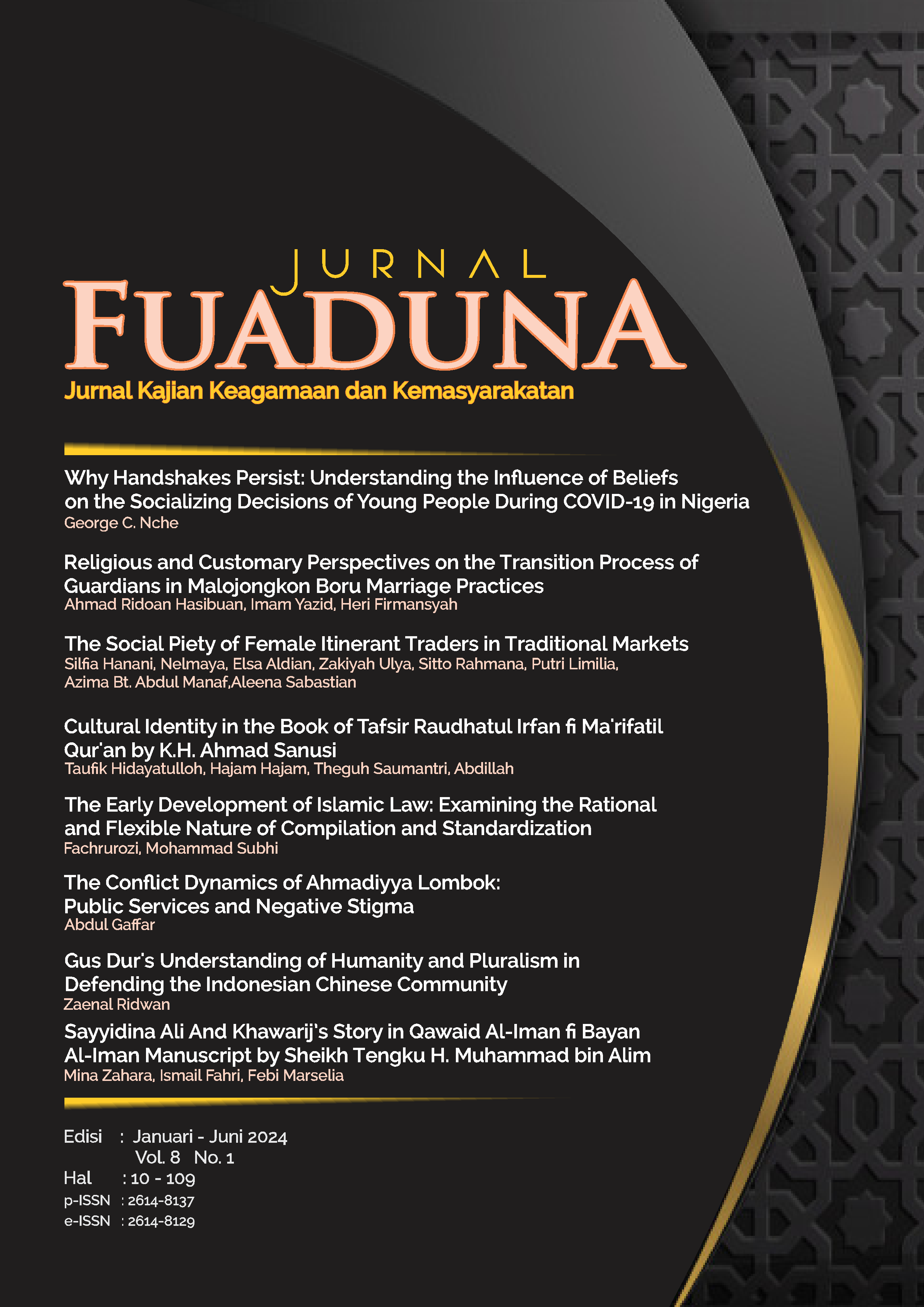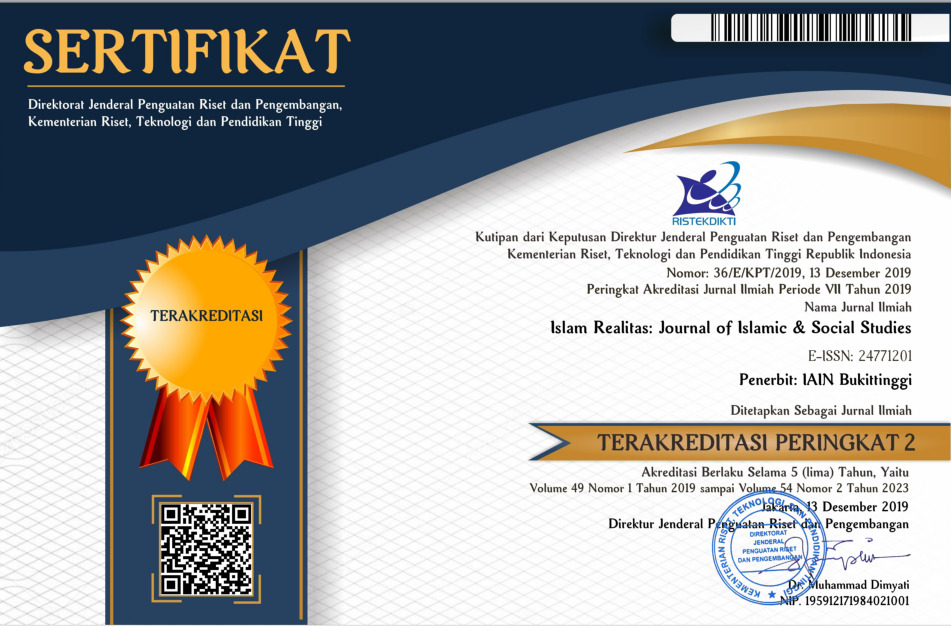Cultural Identity in the Book of Tafsir Raudhatul Irfan fi Ma'rifatil Qur'an by K.H. Ahmad Sanusi
DOI:
https://doi.org/10.30983/fuaduna.v8i1.8490Abstract
The tafsir (Qur’anic commentary) is one of the essential tools for explaining and deepening the understanding of the teachings of the Qur’an within the community. Besides serving as a religious instrument, tafsir often reflects cultural richness by integrating Islamic aspects with local cultural values. This study aims to explore how the cultural identity of the Sundanese people is reflected in the Tafsir Raudhatul Irfan fi Ma’rifatil Qur’an, written by K.H. Ahmad Sanusi from Sukabumi. The research method used is descriptive-analytical with a qualitative approach. The findings of this study indicate that the cultural identity in the Tafsir Raudhatul Irfan is evident in several aspects of local wisdom, particularly in the field of language. The Sundanese language used in this tafsir is the daily language of the mufassir (commentator). Thus, the writing of this tafsir was primarily intended for the students in Islamic boarding schools and the Sundanese community who understand the language rather than for a broader audience. Furthermore, the cultural identity is also reflected in the writing system, where the mufassir utilizes the Pegon script to convey his tafsir. The Pegon script, which is a writing system that uses Arabic characters for the Sundanese, Javanese, and Madurese languages, is employed in this tafsir as a means to preserve and maintain local literary traditions while still conveying Islamic teachings.
Downloads
Published
How to Cite
Issue
Section
Citation Check
License
Copyright (c) 2024 Taufik Hidayatulloh, Hajam Hajam; Theguh Saumantri, Abdillah Abdillah

This work is licensed under a Creative Commons Attribution-ShareAlike 4.0 International License.
Authors who publish with this journal agree to the following terms:
- Authors retain copyright and grant the journal right of first publication with the work simultaneously licensed under a Creative Commons Attribution-ShareAlike 4.0. that allows others to share the work with an acknowledgment of the work's authorship and initial publication in this journal.
- Authors are able to enter into separate, additional contractual arrangements for the non-exclusive distribution of the journal's published version of the work (e.g., post it to an institutional repository or publish it in a book), with an acknowledgment of its initial publication in this journal.
- Authors are permitted and encouraged to post their work online (e.g., in institutional repositories or on their website) prior to and during the submission process, as it can lead to productive exchanges, as well as earlier and greater citation of published work (See The Effect of Open Access).





